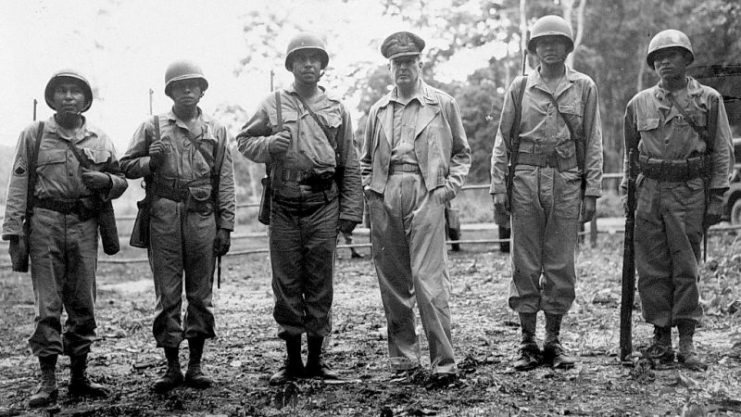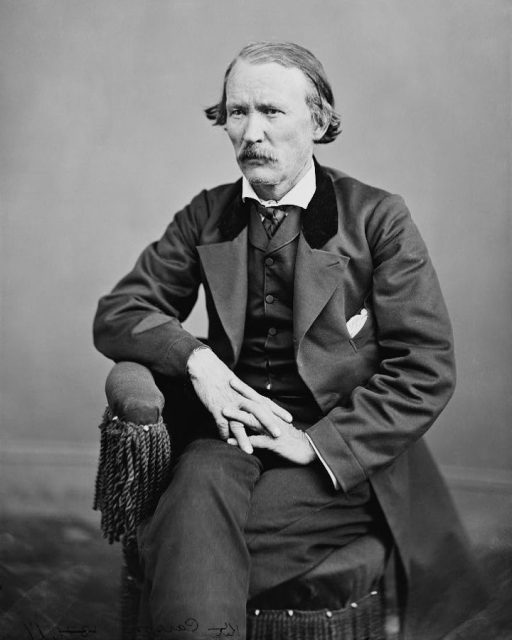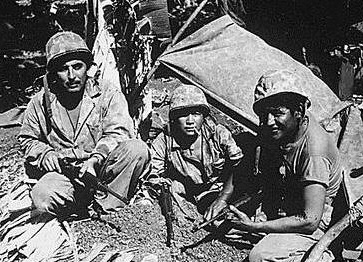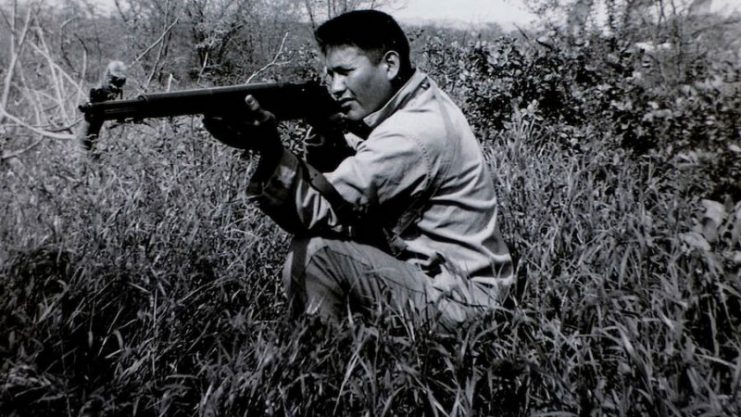The Navajo ‘Code Talkers’ were one of the most unrecognized groups of Native Americans involved in cryptography in military history. They used their native Navajo tongue, a language the Japanese could never decipher, to communicate important messages during World War II. The Navajo believed that their language was sacred and that it was first spoken at the dawn of creation.
The language is considered an Athabaskan language, which is a language group derived from the natives that live in Alaska and Canada. In addition, according to linguists, the language is believed to ultimately be of Siberian or Tibetan origin. It is also believed that the language came from those who spoke many Tibetan languages before they crossed the landbridge that existed between the Eurasian and North American continents during the Ice Age.

After crossing the landbridge, they eventually settled in the southwestern United States. Years later, when the Spaniards arrived in the sixteenth century, their systematic oppression began. After the Spanish, the settlers from the eastern United States encountered the Navajo. Conflicts arose as the settlers took lands east of the Mississippi.
During the nineteenth century, Civil War generals like William Sherman had a policy of eradicating the Native Americans. Sherman himself declared “The more we kill this year, the less we will have to kill next year.” By 1863, the US military, led by General Kit Carson, was tracking the Navajo, slaughtering livestock, burning crops, villages and all those who opposed it. Consequently, the Navajo were driven 400 miles from Oklahoma to Fort Sumner, New Mexico.
Their exile would be later known as The Long Walk. After suffering for four years in exile, the Navajo leaders negotiated a treaty with the United States allowing they returned to the homeland known to the Navajo as the Four Sacred Mountains.

Once the Navajo had returned home, the Federal government assumed responsibility for educating Navajo children. They were sent to boarding schools to rid them of their culture and to ‘Americanize’ them. Not only were they taken from their homes, they were ordered to bury their culture and they were punished if they didn’t.
They were not allowed to speak their original tongue in public and they were also told that their pagan religion was wrong and that they need to renounce it in order to become ‘civilized.’ In summary, they were told how to be white and that the practice of the Navajo culture was forbidden.
Carl Laurmen, a former Navajo code talker recalled his experiences during Indian school in the 1920s and retold by his daughter in the documentary “In search of History – Navajo Code Talkers.” he describes his experience of how he would always get demerits for speaking Navajo because it was totally forbidden.

Then, in 1941, Pearl Harbor was attacked. Shortly thereafter, the Navajo heard of the attack. As a response, hundreds of young Navajo men reported for duty at the Reservation Agency.
These brave Navajo men had a strong sense of pride and duty and wanted to protect their nation. They believed that this was their land and they were obligated to protect it. Many of them were already knowledgeable of the fact the Japanese were conquering the Pacific.

However, because the Navajo had experienced many years of abuse from the United States, some felt that they had no reasons to join the war. But, as the Japanese were advancing throughout the Pacific, the US military was in need of swift and secure communications which the Allies lacked. Many of the nation’s best military minds came together to solve the problem.
Two months after the Pearl Harbor bombings, Phillip Johnston, a civil engineer, had an idea. He believed that the Navajo could use their complex language in the military for fast and secure communications. However, the Marines needed proof that this system would work. As a result, a demonstration was required to prove that the language was useful for combat.
The Navajo could easily encode, transmit and decode any three lines in English in less than 20 seconds. This easily beat cryptography machines that could take thirty minutes. The Navajo language was understood by few. Those who knew the language grew up speaking it from birth.
Due to the isolation of the Navajo community, no outsiders could understand or speak the language. The Japanese, on the other hand, had highly skilled code breakers. Some Japanese could speak English fluently having been educated in the US and were able to break American code. Therefore, the Navajo had the upper hand. By using a language that was complex and only they could understand, the Japanese could never decipher the code.



The Marines, knowing that Navajos could help win the war, created the 382nd platoon as a special coding unit. In April 1942, the Marines sent recruiters to the Navajo Nation and many of the recruits lied about their age just so they could enlist. Their actual ages ranged from age 15 to age 35, therefore often outside the actual age limits. Only 29 young Navajo men would become the first to be sent to the Navajo Code School in California.
In the Navajo Code School, “The First 29” created 411 terms that could be used in combat. The Navajo even invented words that had never been used before. For example, ‘ship’ became ‘fish’, ‘plane’ became ‘bird’, and ‘grenade’ would be ‘potato’. All of these words would have a special meaning to the Navajo and would prove to be effective in the war zone.
For coding particular letters, the Navajo would first use a Navajo word and then translate it to English, and whatever the first letter was in the English translation, would become the letters that would make up the military term. The code was foolproof.
Before the Navajo went into battle, they would perform their traditional prayer as their ancestors did before they went into battle. They would put corn pollen on their tongues and pray to the “Holy Ones” to protect them in battle.

In August 1942, at Guadalcanal, the Navajo Code Talkers were put to the test, not as code talkers, but as soldiers in battle. Many commanders were totally ignorant on how to use the Code Talkers. So clueless in fact, they were first used as messengers on foot. As time went by the commanders finally put the Code Talkers into communicating via radio.
This finally proved the Code Talkers were in fact very useful. Marine casualties were reduced and the US military was winning. The enemy tried desperately to decipher the code, but the Navajo code proved to be a helmet and a shield to American intelligence information on the battlefield.
As a result of the success, marines requested more Talkers. After the Guadalcanal experiment, 83 more were sent to the Pacific theater. A year later, there were more than 150 stationed there.

The Code Talkers directed air support and artillery from naval ships. They helped win island after island, driving the enemy back. By this time, the Code Talker program grew until about 400 Navajos were in the Pacific. In the 5000 year history of Japan, no one had ever invaded Japanese soil until the Battle of Iwo Jima.
In February 1945, 880 ships carrying 110,000 marines, including the Navajo soldiers, landed on the island of Iwo Jima. Each Japanese soldier was ordered to kill at least 10 Americans and to battle to their deaths. In the Battle of Iwo Jima, six Code Talkers spent 48 hours nonstop sending and receiving over 800 messages.
As the war was coming to an end, a Navajo radio operator on the island of Okinawa was one of the first to receive word that atomic bombs had been dropped on Hiroshima and Nagasaki and that the war was over. By the end of the war around 3600 Navajo had served in various branches, although only about 400 were Code Talkers.

In summary, no one thing could have won the war. However, no one could deny the fact that the US had something the Japanese did not (in addition to the atomic bomb). When the Navajo returned home, they were ordered to keep their code a secret in case it was needed again someday. Unfortunately, despite their important role in the war, the Navajo Code Talkers were not publicly recognized until 1969.
